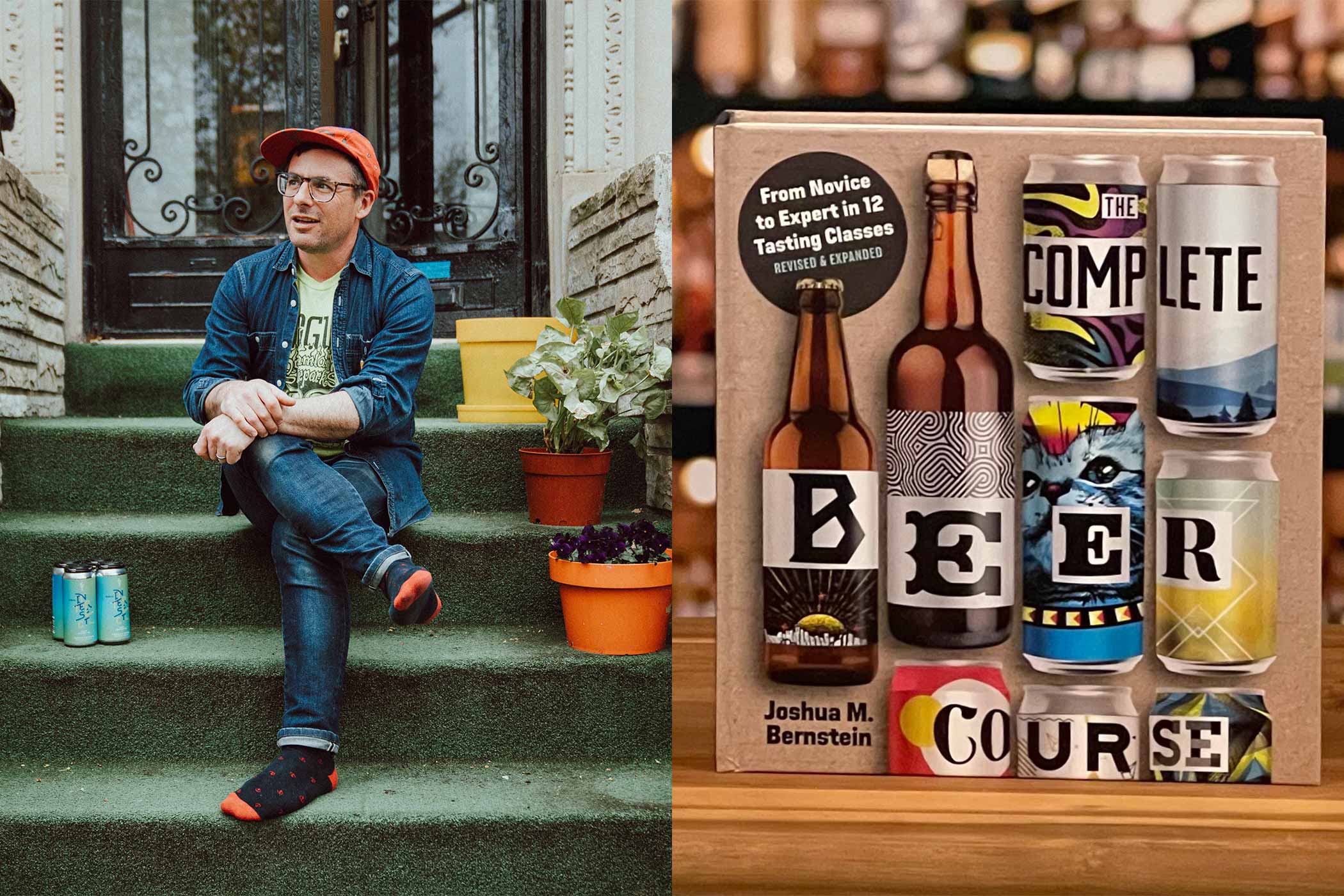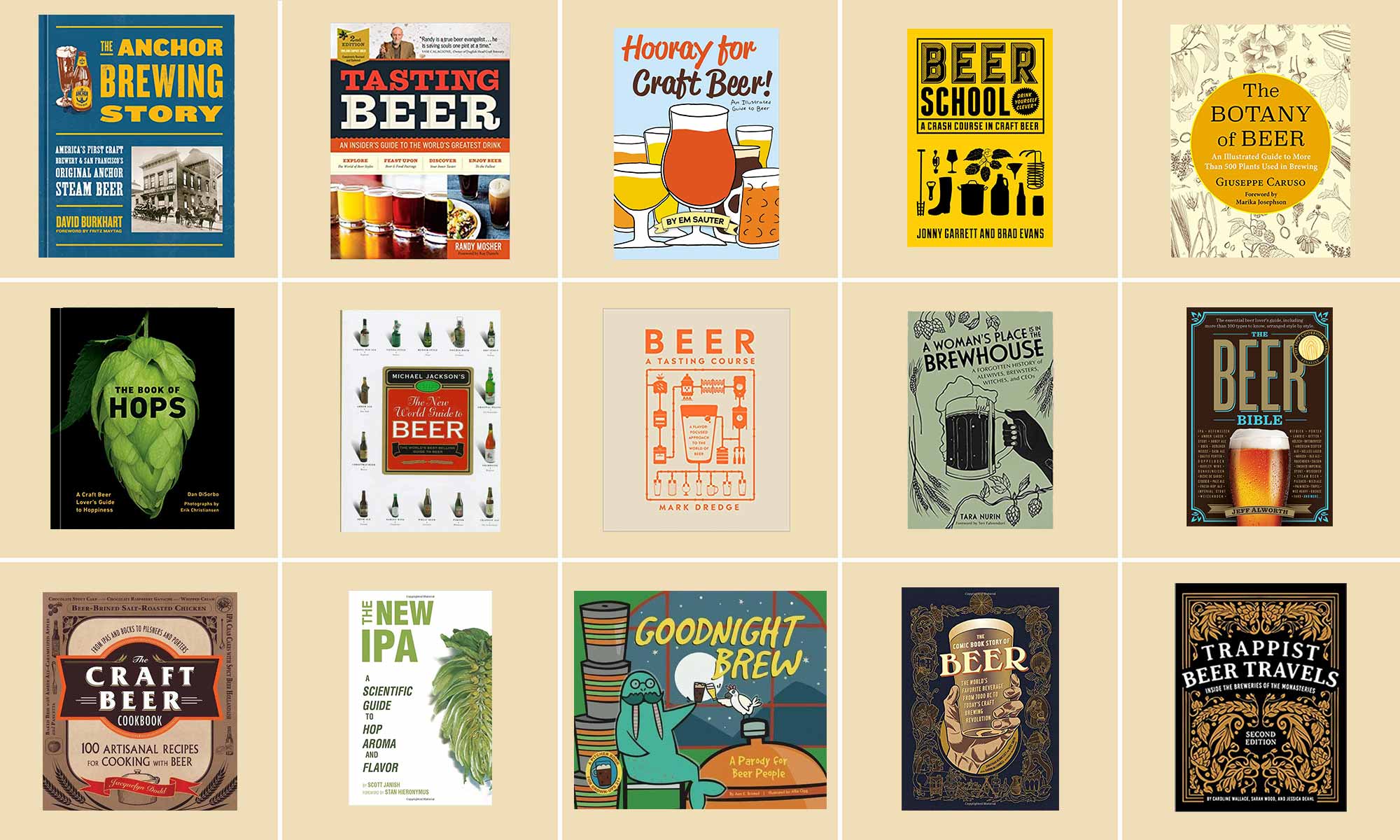Shop
The Complete Beer Course Celebrates a Decade With Updated Edition
One of the best beer books.
More Stories Like This...
If there’s one modern beer journalist to know, it’s Josh Bernstein. He’s pioneered the shift of niche beer writing toward a broader audience, and his book, The Complete Beer Course, is just that. When he wrote the original version in 2013, the tome included a detailed breakdown of the beer market, beer styles, how to perform tastings, and what to identify when dissecting a beer.
For the next ten years, countless beer enthusiasts flipped through Bernstein’s pages to amp up their education and learn about their passion and craft. We even called Bernstein’s book one of our all-time “29 Best Beer Books.”
Because he’s as good as it gets—and this book shows you how, with plenty of work, you could get there too.
To celebrate a decade in publication, on June 6, 2023, Bernstein released an updated edition, The Complete Beer Course: From Novice to Expert in Twelve Tasting Classes.
Overhauled to reflect the seismic shifts of the last decade in craft beer, Bernstein’s revised book should be a must-add to any craft beer lover’s bookcase.
We sat down with Bernstein to ask him why he wanted to update the book, what new styles we can expect to read about, what new stories we’ll find on these pages, and why he never recommends going back in time and looking at what you did ten years ago.
GET THE NEW COMPLETE BEER COURSE
Grace Weitz: After going strong for a decade, why did you update The Complete Beer Course?
Josh Bernstein: If you think about how we got together and learned about beer through the 2010s, a lot was built on the idea of pilgrimages to better beer cities like San Diego and Portland, OR. You went to the ten beer bars in your town that had tap takeovers, and you went to beer stores and bought beer.
There was a common understanding of beer. You knew Stone IPA across the county; you knew these beers because there were so few exemplary styles. But around the 2010s, things exploded in a big way, and the sense of framework splintered. The hazy IPA people enjoy in New York is different from the hazy IPA people enjoy in San Diego.
[And] with the pandemic, I realized that it made no sense to tell people to go to a certain place to experience “the best of the best” when your gas station of today has better beer than your beer bar of ten years agoWe’re rethinking what’s important, what styles are key right now, and what’s bubbling up.
This [project] made me rack my brain. Luckily I still have my hair so I can pull it out, and it will grow back!
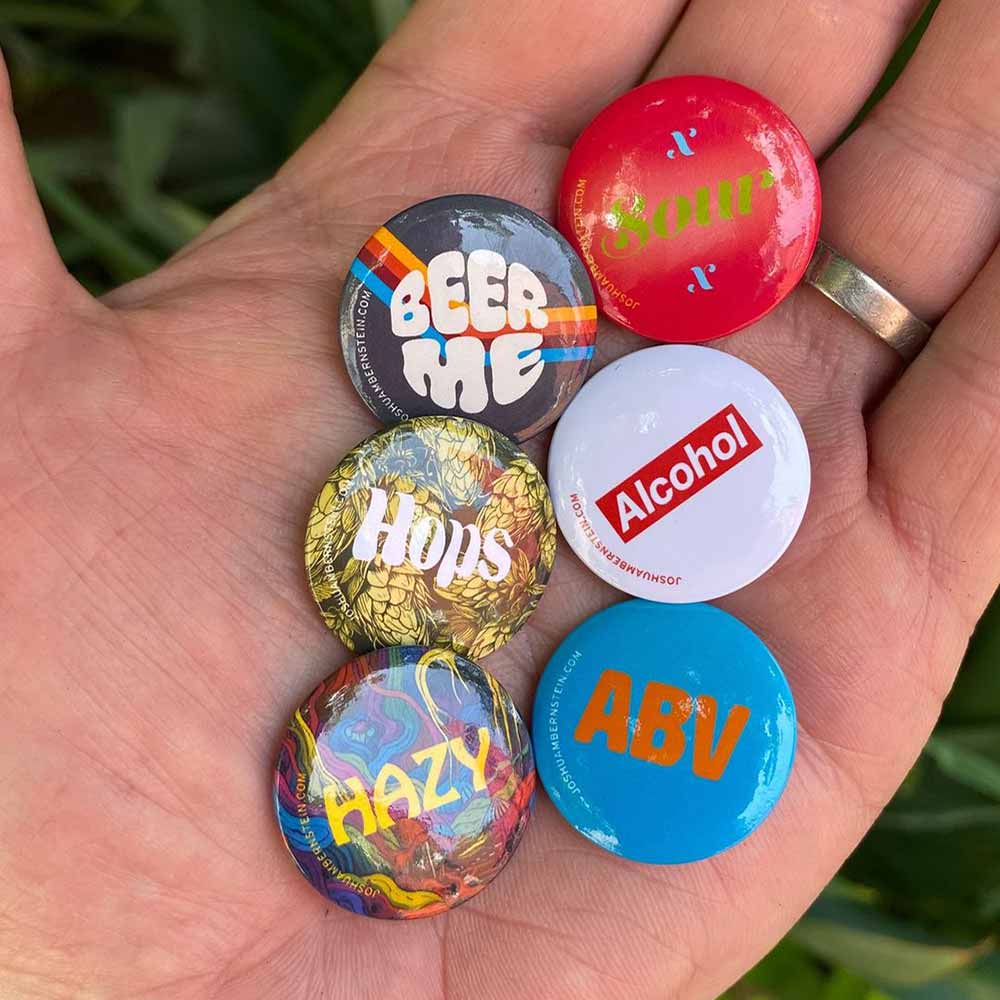
Photography courtesy of Josh Bernstein
GW: People’s tastes have certainly changed since the early 2010s. What beer styles are you focusing on in this book?
JB: Back in the original edition, style-wise, it was Belgian-style IPAs and white IPAs! Now, I talk about hazies, doubles, and a section on substyles, so I wasn’t putting everything into a box.
I also changed the international chapter to burgeoning international styles we should know—like Grodziskies—that haven’t broken out much on the broader landscape.
Pumpkin beers totally faded off for a bit but didn’t disappear, and the people that love them still love them.
All these things come and go so rapidly nowadays. The greater shake-out will be what styles are sticking around and what are not.
One of the biggest challenges was finding examples of classic styles to suggest to people because how many non-adjunct stouts exist on a year-round basis today? Very few! You’ve got Bell’s Kalamazoo, Deschutes Black Butte, and a handful of others.
Finding beers that create a framework of understanding was tougher than ever.
GW: With a project like this, you’re uniquely positioned to retroactively consider the last ten years more so than anyone else. What has that been like for you?
JB: I wouldn’t recommend looking back at what you did ten years ago because you will hate yourself and think you’re an idiot! But it’s a rare opportunity to go back and update things you didn’t know about as much.
In 2013, the narrative was around this David vs. Goliath mindset of craft beer vs. the big guys. I bought into that, too: Who wants craft beer vs. crap beer!? As you get older, you realize these beers are so technically precise; they’re great, stood the test of time, and make people happy, so don’t yuck someone else’s yum.
I’ve been writing about beer for fifteen to twenty years, and I’m not as starry-eyed about it all—just because you can throw fried chicken in a kettle doesn’t mean it’s a narrative. We’re moving beyond the days where everything shocking is awesome and moving to a point where the industry is evolving, the people who have been in it for a while are growing up, and I’ve grown up too.
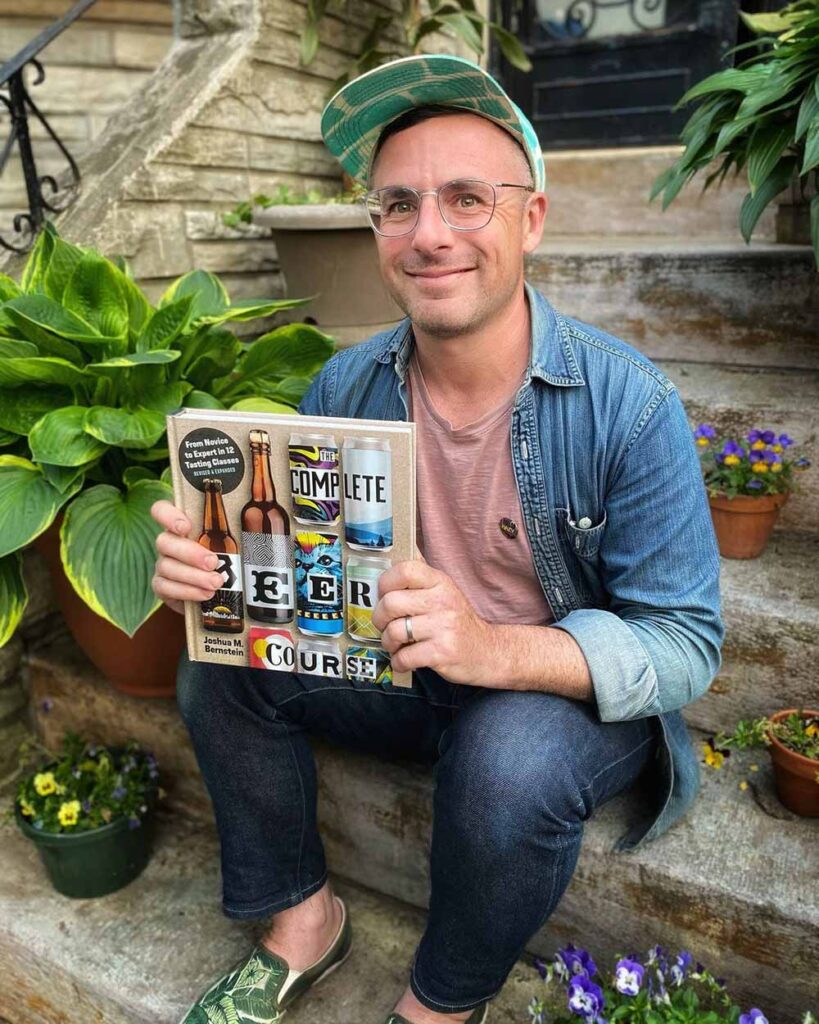
Photography courtesy of @joshmbernstein
GW: We’ve all grown up, right!? Even those working in the industry. One of the most interesting parts of the updated The Complete Beer Course is the time you spend focusing on the stories of certain people in the industry. Why write these narratives?
JB: What’s more timely than the stories of people? How do you showcase diversity without saying beer is diverse?
We’ve gone beyond this world of putting the brewmaster on a pedestal—oh my gosh, you made this magical beer; this is all you. That’s not true. Breweries are filled with people with crucial roles, and I love telling stories about people that inhabit all the roles of the industry.
I wanted to showcase stories of packaging line operators, cellar people, sales reps, quality control folks, and beyond, telling stories of the individual people who are so integral to the day-to-day function of any brewery.
We spent a ton of time Identifying important roles in the beer world that people know nothing about, identifying people across a spectrum of the industry, and letting them tell their stories.
GW: Like who?
JB: Kate Lee, [president] of Hardywood, made salad dressing for the company that owned Hooters before going to the beer world.
Your career takes you one way and then goes a different way; suddenly, you hit this roadblock and go a different way.
Leon Harris, [brewer] at Port City Brewing in Virginia, fell into beer by trying by all means necessary to work his way up into the industry.
What drives you and compels you to get into beer?
Ashleigh Carter from Bierstadt [Lagerhaus] was originally a soccer player and college soccer coach who was introduced to better beer and worked for a homebrew shop in Colorado, which led her to Bierstadt.
What is cool about doing this is it shows people, no matter your skill set, talent, or interest point, there is a place for you to get into beer.
Maryssa Pickett, the designer for Resident Culture, graduated from college without an idea [of what she wanted to do]. She was making punk rock flyers and made one little sticker someone noticed, and that’s how she became Resident Culture’s illustrator.
Just hearing the stories of all these people—some are names people will know, and some are names people won’t know—I wanted to show with 9,000+ breweries in America and dozens, if not hundreds working, so many people get no credit whatsoever that are really important too.
That made me happiest, bringing in all these people.
To be candid, if you want to know about a beer style, you can find anything in two seconds of looking, but weaving in people and bringing these beer styles to life is what I wanted to get across with the book.
GW: I think that really sets this book apart from others. Even your previous version.
JB: Liquid is liquid, but people drive it, and people make it happen.
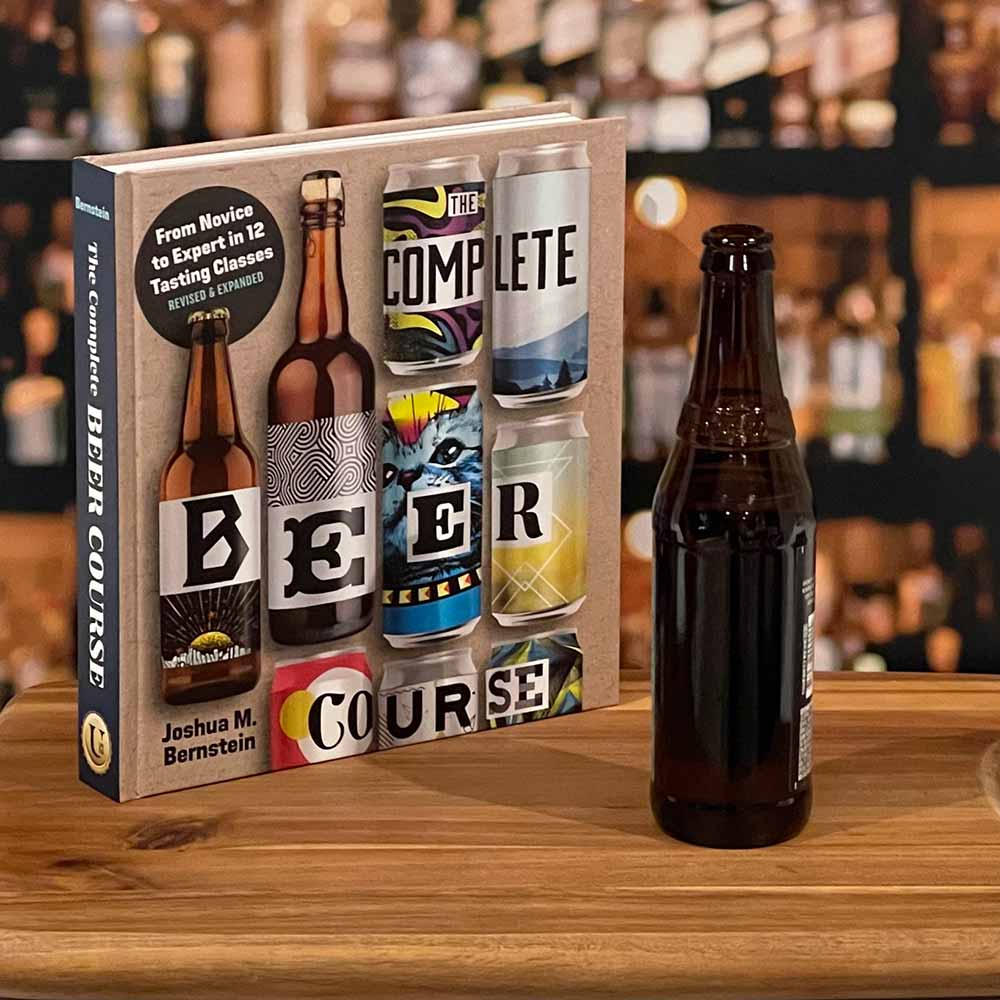
Mockup courtesy of Union Square & Co.
GW: I love that! So can we turn the view around if an updated The Complete Beer Course looks back at the last decade? What do you see ahead for craft beer?
JB: This was such a deep rethink of how we experience beer. What are the important stories to tell? With your magic pocket computer, you don’t need me to tell you everything. But your magic pocket computer can’t contextualize quotes and a way to talk about everything from the past, the present, and the future.
The battle: Great beer is everywhere, but what’s next?
To find out, read Bernstein’s new The Complete Beer Course: From Novice to Expert in Twelve Tasting Classes.

